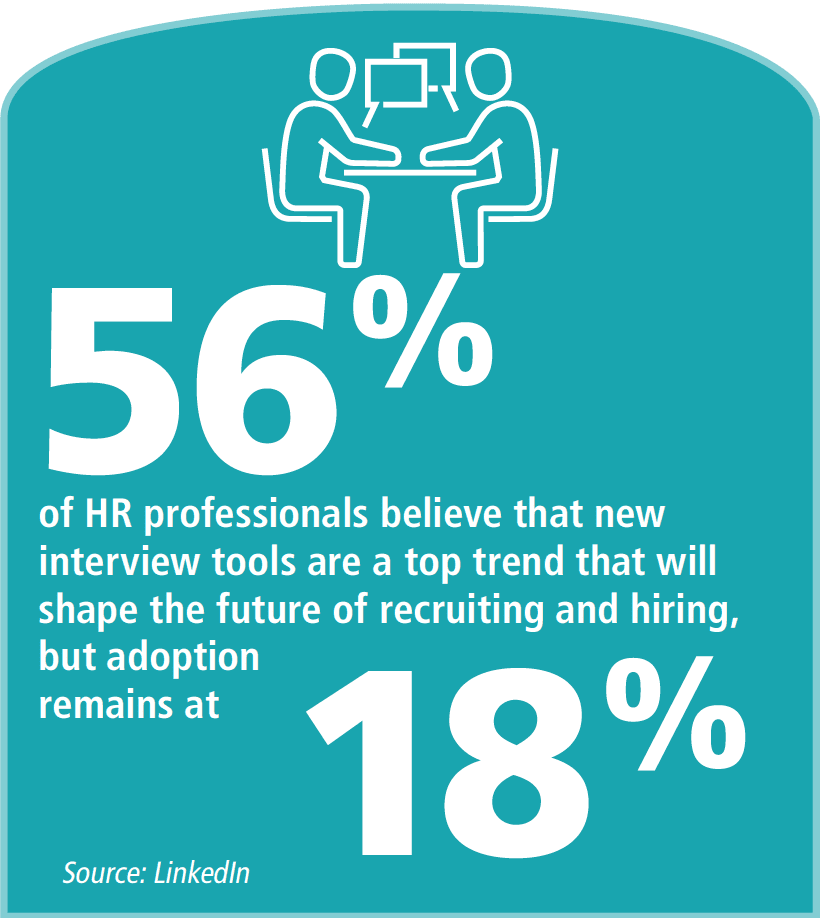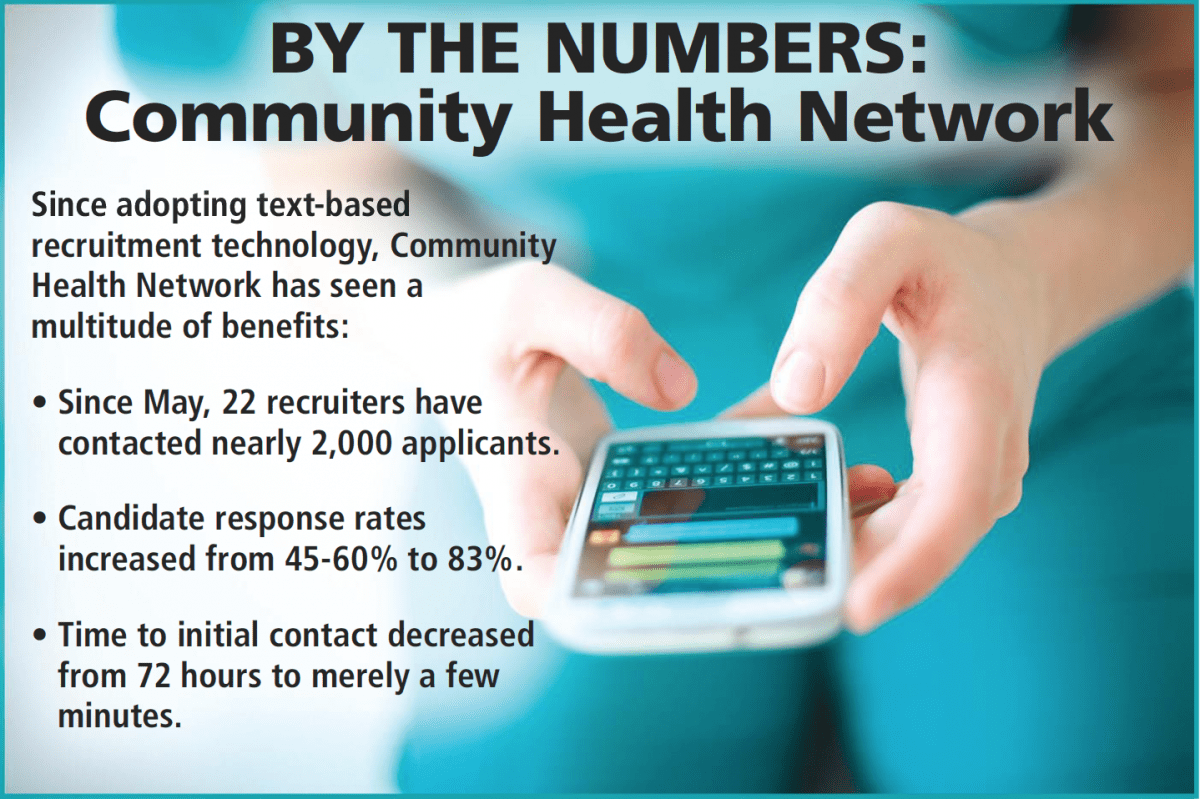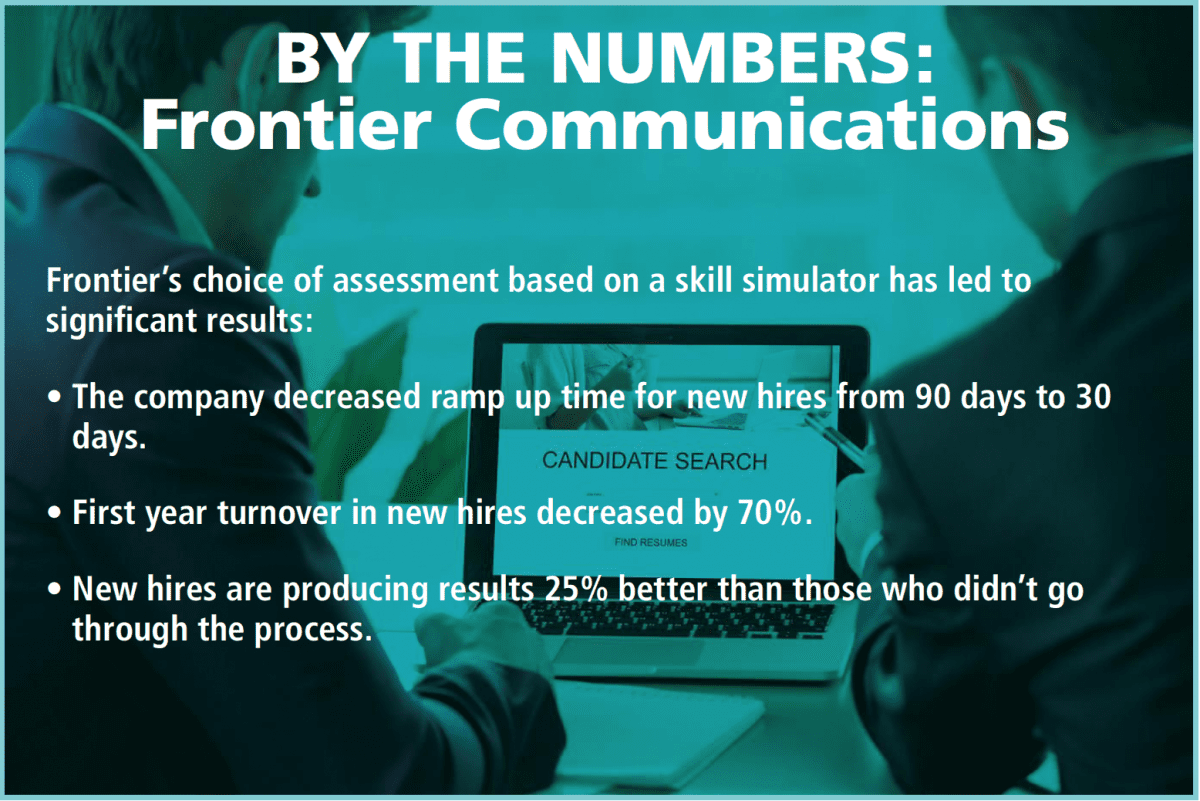Two companies share their innovative approaches to interviewing and assessment.
By Marta Chmielowicz
Organizations are facing unique challenges that are increasing the pressure on HR to get the right candidates in the right positions as quickly as possible. Take, for example, Community Health Network.
“With the nursing shortage in the United States, Community Health Network was trying to backfill positions quicker, cheaper, and better than competitors to reach a generation that’s always on-the-go and aren’t typically sitting at a computer all day or glued to a desk, checking their email,” says Scott Sendelweck, the organization’s HR digital marketing manager.
The leading Indianapolis-based healthcare provider is tackling this issue by partnering with Canvas to deliver a text-based screening tool. After candidates apply, one of Community’s 22 recruiters respond with a text to begin a conversation, explains Sendelweck. This conversation qualifies the candidate for next steps while delivering a convenient and fun interface, improving candidate experience. The platform also has the ability to hide names and gender-specific pronouns from screening transcripts to help reduce any unconscious bias that may occur.
“Nearly every single one of our caregivers that was hired using Canvas has praised the speed of the text-based job screen and considered it both convenient and fun. It’s been exciting for us to dive head first into using something so new and innovative, and I think our candidates are excited to be part of a company that values innovation and technology,” he explains.
And there is an increasing need for speed. Aman Brar, CEO of Canvas, says that a text-based screening platform can save a team of four recruiters 3,689 hours each year with the average time to screen a candidate taking only 4.4 minutes. This time savings is key because according to a study from Officevibe, 60 percent of candidates have quit an application process that takes too long.
Frontier Communications is another company looking to optimize their hiring process. By improving their screening and skills matching techniques, they are increasing productivity and decreasing attrition across the business. “We needed to find a way to identify the correct profile for our sales team in each product and channel to ensure we were decreasing the time to ramp up and turnover,” says Elisa Bannon-Jones, the company’s senior vice president of talent and culture.
To solve this challenge, the TV, internet, and phone provider matches each application with a talent profile designed for a specific role. Those candidates who don’t match a profile are prompted to apply for other roles, while those who make a match are given a simulation assessment powered by DeGarmo to measure their ability.
“Once a candidate is a match for a specific role, they are sent the sales skill simulator, launched through the ATS, whose report is also housed within the ATS,” Bannon-Jones explains. “A candidate that matches the profile and is successful in the sales simulation is then interviewed by the sales leader. The interview guide is generated from the profile, with targeted, validated, job-specific questions. In addition, our sales leaders are trained in interviewing and scoring candidates.”
By utilizing a combined approach that incorporates traditional interviews with objective assessments, Frontier is able to gain a holistic view of each candidate’s abilities and the areas where they would thrive in the organization. “This process brings the most qualified candidates to hiring leaders more quickly, giving them confidence to make a selection with data. The art (interview) blends with the science (profile),” she adds.
Interviewing 4.0
Today’s technology allows hiring managers to evaluate skills, experience, and culture fit during the interview process. Evaluations can take many different formats, ranging from unstructured free-flow conversations to cognitive assessments, behavioral interviews, hypothetical situational questions, gamified experiences, and more. For example:
- Online soft skills assessments can be used to measure difficult-to-quantify traits like teamwork, curiosity, and motivation.
- Job simulations allow companies to observe candidates’ skills in action.
- Casual unstructured interviews provide insight into a candidate’s personality and character.
- Virtual reality-enabled interviews allow employers to assess job applicants’ performance in a safe and standardized setting.
- Video and text interviews expand reach and provide a modern touch.
These new approaches are promising, yet still early in adoption. LinkedIn’s Global Recruiting Trends 2018 study reports that 56 percent of HR professionals believe that new interview tools are a top trend that will shape the future of recruiting and hiring, but only 18 percent have committed to leveraging them in their interview and assessment processes.
So how can HR get ahead of the curve and revamp their process?
1. Benchmark. According to Shanil Kaderali, executive vice president of global talent solutions at Pierpoint, the journey toward an expanded interviewing approach begins with an evaluation of the state of the marketplace and how new technologies are being used by other companies. “The organization’s HR people do have to do some benchmarking, and not just benchmarking as a copy-and-paste framework -what works for other companies may not work for their particular company,” he says.

Kaderali says that this evaluation process can include a regression analysis to calculate the true cost to turnover as well as analyses to determine the costs of filling a particular role and the impact of that on the business.
But in addition to analyzing performance, Ron Walters, senior managing partner at Endevis, recommends that organizations examine their values and branding. “An actual step if you want to successfully engage with an alternative interviewing technique is looking at your process, looking at your brand, and validating your values to make sure that your values are seen within your organization -and that you can differentiate your brand. Then you need to challenge your current structure and find the gaps, and then from there, seek the type of testing or technique that’s going to give you the results that you want.”
This enables HR professionals to develop an interviewing process that reflects the employer brand in a significant way, deepening brand values and brand recognition and ultimately creating a better culture within the workforce.
3. Outline goals. To choose the right approach and technology, HR professionals need to determine the goals of the interview. “I think the most important thing when you go into these alternative styles is to make sure that you have an idea or plan of what it is that you’re seeking with the individual,” advises Walters. “If you’re looking for somebody that can handle stress within the workplace or somebody that can let their personality shine, I think you need to put alterative interviews in place that might bring those questions out.”
4. Roll it out gradually. Change management is always a challenge, and introducing new ways to recruit and interview talent is bound to create some confusion among the talent acquisition team. Canvas’ advice is to manage this transition very carefully by introducing it one step at a time.
“We often recommend that companies dedicate time and effort to the change management process of implementing new talent acquisition processes such as text-based interviewing,” says Brar. “This might include starting off a core group of recruiters to champion the beginning of your text-based interviewing strategy and rolling out to subsequent groups as you gain traction. Managing any task in a new way means taking the time to learn the best use-case for your audience. An example might include making sure to ask questions that warrant thoughtful responses and leveraging employment branding materials that drive candidate engagement.”
5. Test and seek feedback. Once new techniques are in place, Walters recommends getting feedback from the team and modifying the approach where needed. Diverse focus groups from within the organization that have the skill sets the new interviewing process is designed to seek can be a great resource. These groups should include individuals from different generations including millennials, Generation X, baby boomers, and Generation Z so that HR leaders can hear and address a range of concerns. “You want to make sure that you can modify the process and have the flexibility to make it fit those people who may have some concerns about it,” Walters says. “At the end of the day, you want the person who will be the best fit for the organization -the person who will breathe your culture, breathe your brand, and differentiate you within the marketplace to keep you competitive.”
















